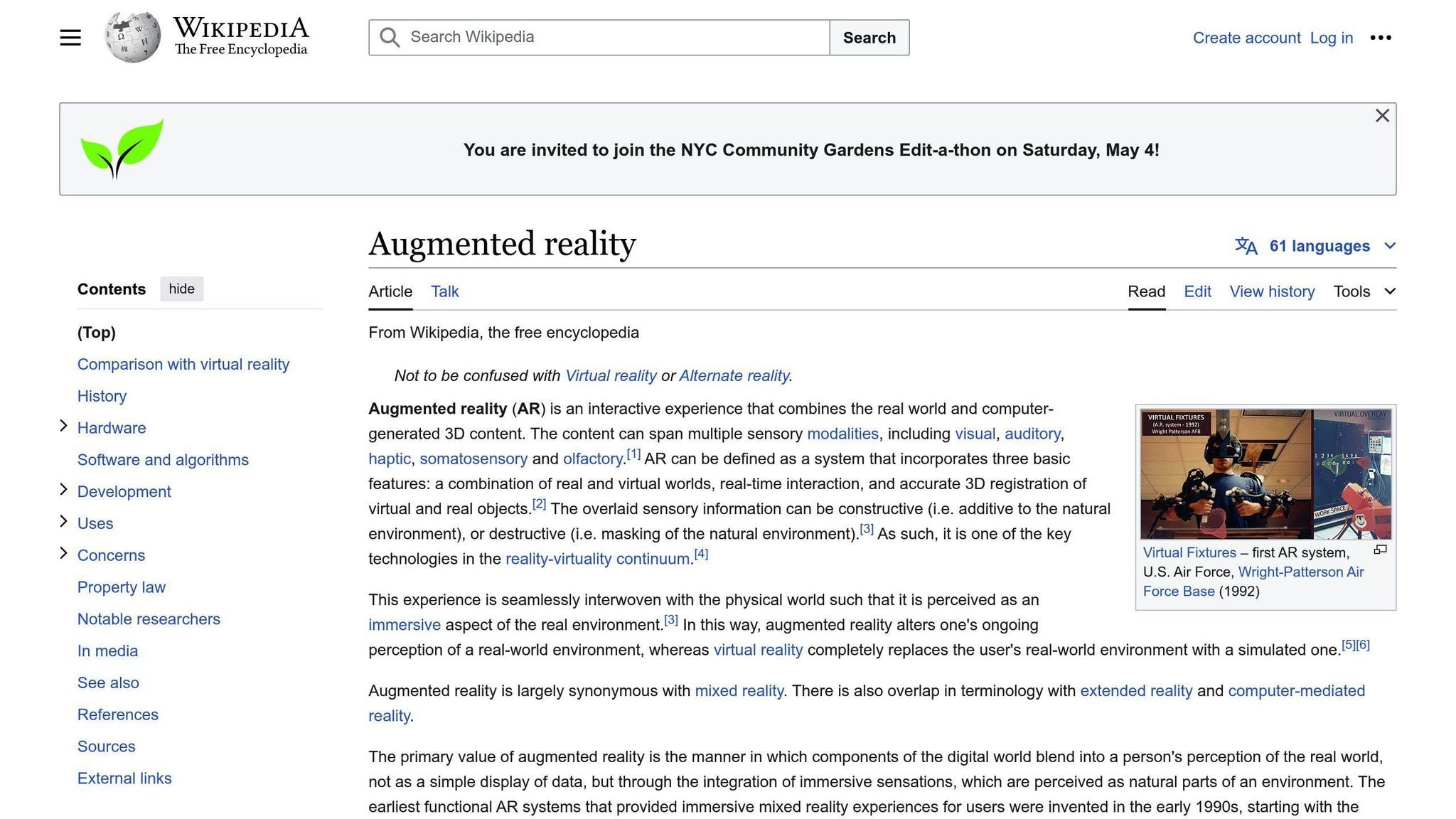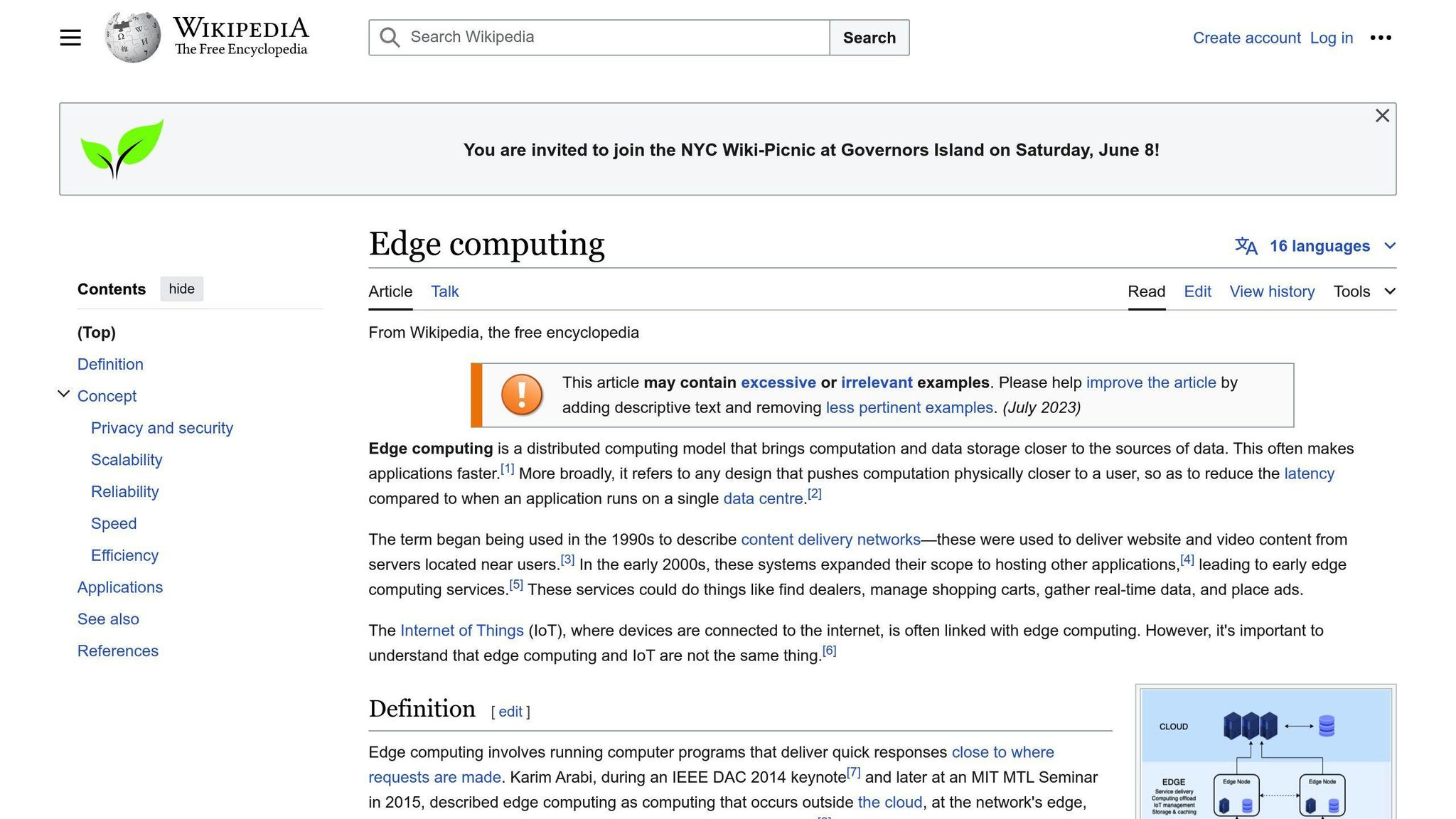AI Image Recognition for Mobile Shopping: Guide 2024
AI image recognition enables customers to find products by uploading or taking photos instead of text searches. This technology uses machine learning to identify objects, patterns, and details in images, providing a more intuitive shopping experience optimized for mobile devices.
Key Benefits:
- Intuitive Product Discovery: Customers simply upload or snap a photo of an item they want, and the AI system identifies the product or suggests similar options.
- On-the-Go Product Recognition: Point your phone's camera at any product, and the AI recognizes it, displaying details like price, reviews, and availability.
- Virtual Try-On: AI-powered augmented reality allows customers to virtually try on clothes, makeup, or accessories before purchasing, reducing returns.
To integrate AI image recognition into mobile shopping apps:
- Use cloud services with AI image recognition APIs
- Ensure AI features are easily accessible without slowing the app
- Protect customer data privacy and security
- Train the AI system on high-quality, diverse data to avoid biases
| Key Consideration | Description |
|---|---|
| Approach | Choose between traditional machine learning (faster, easier) or deep learning (higher accuracy, more complex) |
| Training | Collect large, diverse datasets; select suitable model architecture; monitor performance |
| Deployment | Optimize for real-time inference, resource constraints, and e-commerce platform integration |
Future Trends:
- Augmented Reality (AR) Integration for immersive virtual try-on experiences
- Improved Deep Learning Algorithms for better accuracy and efficiency
- Omni-Channel Retail Experiences for seamless, personalized shopping across channels
- Edge Computing for real-time processing and reduced latency
- Ethical Development prioritizing fairness, transparency, and data privacy
Related video from YouTube
Understanding AI Image Recognition
What is AI Image Recognition?
AI image recognition is a type of artificial intelligence (AI) that allows computers to identify and understand visual content from images or videos. It uses machine learning to automatically recognize objects, people, and patterns in images.
How Does It Work?
An AI image recognition system has several key steps:
1. Image Acquisition: Collecting images from sources like cameras or databases.
2. Preprocessing: Enhancing and preparing the images for analysis.
3. Feature Extraction: Identifying relevant features like shapes, colors, and textures in the images.
4. Classification: Categorizing the images based on their features.
5. Object Detection: Locating specific objects within the images.
Key Components
- Machine Learning Algorithms: AI image recognition uses algorithms that can learn from data and improve over time.
- Training Data: Large, high-quality datasets are needed to train the system to recognize images accurately.
- Hardware: Specialized hardware like GPUs may be required for efficient processing.
Challenges
While AI image recognition offers many benefits, it also faces some challenges:
- Data Quality: Accurate results depend on having large, high-quality training datasets.
- Variations: The system can be sensitive to changes in lighting, occlusion, and object orientation.
- Computational Resources: AI image recognition can be resource-intensive, requiring powerful hardware.
To address these challenges, developers can use techniques like data augmentation, transfer learning, and ensemble methods to improve accuracy and robustness.
AI Image Recognition for Mobile Shopping
Simple Product Discovery
AI image recognition makes finding products easier for mobile shoppers. Customers can upload a photo or take a picture of an item they like. The AI system then identifies the product and suggests similar options.
Recognizing Products on the Go
Point your phone's camera at a product, and the AI system recognizes it. You'll see details like price, reviews, and availability. This helps if you want to buy something you saw in a physical store but can't find online.
Virtual Try-On Using AI
Try on clothes, makeup, or accessories virtually using AI-powered augmented reality (AR). This improves the shopping experience and reduces returns.
Integrating AI into Mobile Apps
To add AI image recognition to mobile shopping apps:
- Use cloud services with AI image recognition APIs
- Ensure AI features are easy to access without slowing the app
- Protect customer data privacy and security
- Train the AI system on high-quality, diverse data to avoid biases
Best Practices
When using AI image recognition in mobile shopping apps:
- Train the AI system on diverse, high-quality data to improve accuracy
- Prioritize user feedback and continuously update the AI
- Optimize for scalability and performance
sbb-itb-be22d9e
Developing an AI Image Recognition System
Choosing the Right Approach
When building an AI image recognition system for mobile shopping, you need to choose between two main approaches: traditional machine learning and deep learning. Here's a quick comparison:
| Approach | Advantages | Drawbacks |
|---|---|---|
| Traditional Machine Learning | Faster development and training, easier to understand | Lower accuracy, requires manual feature engineering |
| Deep Learning | Higher accuracy, can learn complex patterns automatically | Requires large datasets, computationally intensive |
Consider your project's specific needs and constraints. If you need a faster development cycle and interpretability, traditional machine learning may be the better choice. However, if you require higher accuracy and can invest in large datasets and computing power, deep learning is the way to go.
Training and Evaluating Models
Training an AI image recognition model involves these key steps:
- Data preparation: Collect a large, diverse dataset of labeled images. Ensure the dataset is balanced and representative of the target domain.
- Model architecture: Choose a suitable model architecture, such as convolutional neural networks (CNNs) or transfer learning models like VGG16 or ResNet50.
- Training: Train the model using an optimizer and loss function. Monitor performance on a validation set and adjust hyperparameters as needed.
Evaluating the model's performance is crucial. Common evaluation metrics include:
- Accuracy: The proportion of correctly classified images
- Precision: The proportion of true positives among all positive predictions
- Recall: The proportion of true positives among all actual positive instances
Continuously monitor and improve the model's performance by collecting user feedback, updating the dataset, and retraining the model.
Deploying and Integrating Models
Deploying an AI image recognition model on mobile devices or cloud platforms requires careful consideration:
- Real-time inference: Ensure the model can process images in real-time, with low latency and high throughput.
- Resource constraints: Optimize the model for mobile devices or cloud platforms, considering factors like memory, CPU, and bandwidth.
- Integration with e-commerce platforms: Integrate the AI image recognition system with existing e-commerce platforms and mobile apps, ensuring a seamless user experience and efficient data exchange.
Future Trends and Advancements
The field of AI image recognition for mobile shopping is rapidly progressing, with several emerging trends and advancements set to shape its future.
Augmented Reality (AR) Integration

One exciting development is the integration of AI image recognition with augmented reality (AR) technology. This combination enables retailers to offer immersive shopping experiences, allowing customers to virtually try on products in their own space before purchasing. With AI image recognition, AR-powered virtual try-on experiences can become more personalized and accurate.
Improved Deep Learning Algorithms
Deep learning algorithms are continuously improving, enabling AI image recognition systems to become more accurate and efficient. These advancements will allow retailers to analyze larger datasets, identify new trends, and make more informed decisions. Furthermore, the development of more sophisticated algorithms will lead to better object detection, facial recognition, and image classification capabilities.
Omni-Channel Retail Experiences
AI image recognition is set to play a crucial role in creating seamless omni-channel retail experiences. By integrating AI image recognition with online and offline channels, retailers can offer personalized experiences across all touchpoints, from social media to physical stores. This will enable customers to easily find products, receive tailored recommendations, and enjoy a unified shopping experience.
Edge Computing for Real-Time Processing

The increasing adoption of edge computing will enable retailers to process AI image recognition data in real-time, reducing latency and improving response times. This will be particularly important for applications like virtual try-on, where instant feedback is crucial. Edge computing will also reduce the need for cloud-based processing, minimizing costs and enhancing data security.
Ethical Considerations and Responsible Development
As AI image recognition technology advances, it's essential for retailers to prioritize ethical considerations and responsible development. This includes ensuring fairness, transparency, and accountability in AI decision-making, as well as protecting customer data and privacy. By doing so, retailers can build trust with their customers and maintain a positive brand reputation.
| Trend | Description |
|---|---|
| AR Integration | Combining AI image recognition with augmented reality for immersive virtual try-on experiences. |
| Improved Algorithms | More accurate and efficient deep learning algorithms for better object detection and image classification. |
| Omni-Channel Experiences | Seamless integration across online and offline channels for personalized shopping experiences. |
| Edge Computing | Real-time processing of AI image recognition data for reduced latency and improved response times. |
| Ethical Development | Prioritizing fairness, transparency, and data privacy to build customer trust and maintain a positive brand reputation. |
Conclusion
As we wrap up this guide on AI image recognition for mobile shopping, it's clear that this technology will transform how we shop online. With its ability to provide intuitive and personalized shopping experiences, AI image recognition is set to reshape the e-commerce landscape.
Throughout this guide, we've explored the benefits, use cases, and best practices of AI image recognition in mobile shopping. We've also looked at future trends and advancements, such as augmented reality integration, improved algorithms, omni-channel experiences, edge computing, and responsible development.
As you begin your AI image recognition journey, remember to prioritize the customer experience, ensure data privacy and security, and stay informed about the latest developments. By doing so, you'll be well-positioned to leverage the power of AI image recognition and stay ahead of the competition in the ever-evolving world of mobile shopping.
For further learning and staying up-to-date on AI image recognition advancements, we recommend exploring the following resources:
- Industry reports and research papers on AI image recognition in e-commerce
- Online courses and tutorials on AI and machine learning
- AI-focused conferences and events
- Relevant blogs and news outlets covering AI and e-commerce
| Resource | Description |
|---|---|
| Industry Reports | Stay informed with reports on AI image recognition in e-commerce. |
| Online Courses | Learn from tutorials on AI and machine learning. |
| Conferences and Events | Attend AI-focused gatherings to network and learn. |
| Blogs and News Outlets | Follow relevant sources covering AI and e-commerce. |
FAQs
What is image recognition in eCommerce?
Image recognition in eCommerce uses AI to analyze and identify products from images. This allows customers to find items by uploading photos, making the search process simpler and improving the shopping experience.
How do I use AI to recognize an image?
AI image recognition works by learning from large datasets of tagged images. For example, if you upload a photo of a dress, the AI can quickly scan thousands of products to find similar matches. This saves time browsing and helps you find the perfect item faster.
| Feature | Description |
|---|---|
| Image Upload | Customers can upload or take a photo of an item they want to find. |
| AI Analysis | The AI analyzes the image and identifies the product or similar items. |
| Product Matches | The system displays matching or comparable products from the retailer's catalog. |
| Simplified Search | Customers can find desired items without extensive text-based searches. |
Add a New Sales Channel
- • Digital downloads
- • Courses & tutorials
- • Visual & audio assets
- • Game credits or licenses
- • Private memberships

